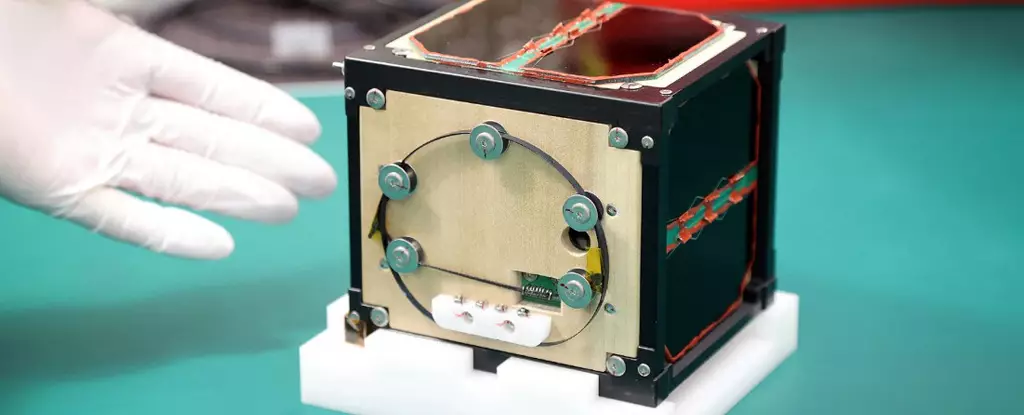In a groundbreaking achievement, Japanese researchers have successfully built the world’s first wooden satellite, marking a significant development in space technology. The tiny cuboid craft, developed by scientists at Kyoto University in collaboration with Sumitomo Forestry, is set to be launched into space on a SpaceX rocket in September.
The experimental satellite, measuring just 10 centimeters on each side, is constructed using wooden materials, specifically magnolia wood. The creators of the satellite anticipate that the wooden material will burn up completely upon re-entering the Earth’s atmosphere. This innovative approach aims to address the issue of metal particles generated when traditional satellites made of metal decompose upon retirement, which can have detrimental effects on the environment and telecommunications systems.
Takao Doi, an astronaut and special professor at Kyoto University, emphasized the importance of non-metal satellites becoming mainstream in space technology. The team plans to hand over the wooden satellite, named LignoSat, to the Japan Aerospace Exploration Agency (JAXA) for further testing. The satellite is scheduled to be launched from the Kennedy Space Center to the International Space Station (ISS) in September.
Once on the ISS, the wooden satellite will be released from the Japanese experiment module to undergo rigorous testing to evaluate its strength and durability. Data transmitted from the satellite will be analyzed by researchers to detect signs of strain and assess its ability to withstand extreme temperature variations. This data will provide valuable insights into the feasibility of wooden satellites in space missions.
In addition to the wooden satellite project, a joint venture between the European Space Agency (ESA) and JAXA led to the launch of a sophisticated satellite from California. The EarthCARE satellite aims to study the role of clouds in combating climate change by orbiting approximately 400 kilometers above the Earth’s surface for three years. These simultaneous missions highlight the collaborative efforts of international space agencies in advancing scientific research and technology innovation.
This article reframes the original information about the development of the world’s first wooden satellite, providing a unique perspective on the significance of this achievement in space exploration. The adoption of wooden materials in satellite construction represents a novel approach to addressing environmental concerns associated with traditional metal satellites, paving the way for sustainable and innovative solutions in space technology.



Leave a Reply